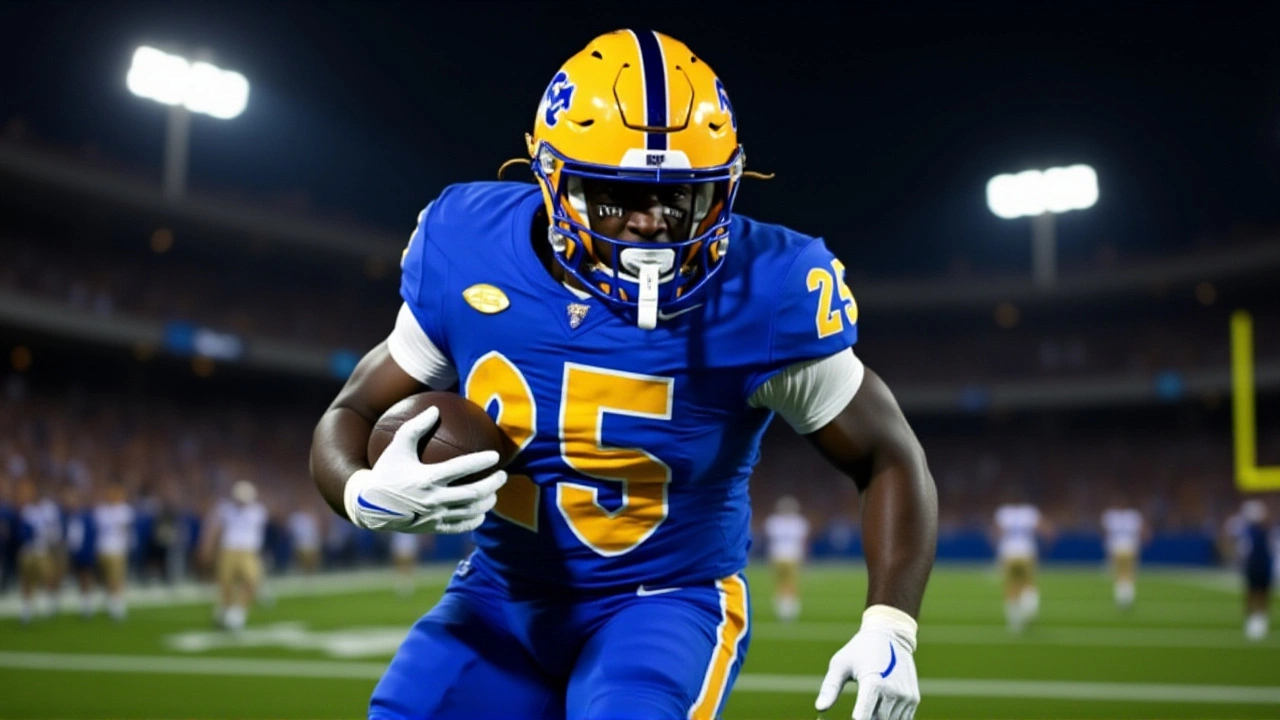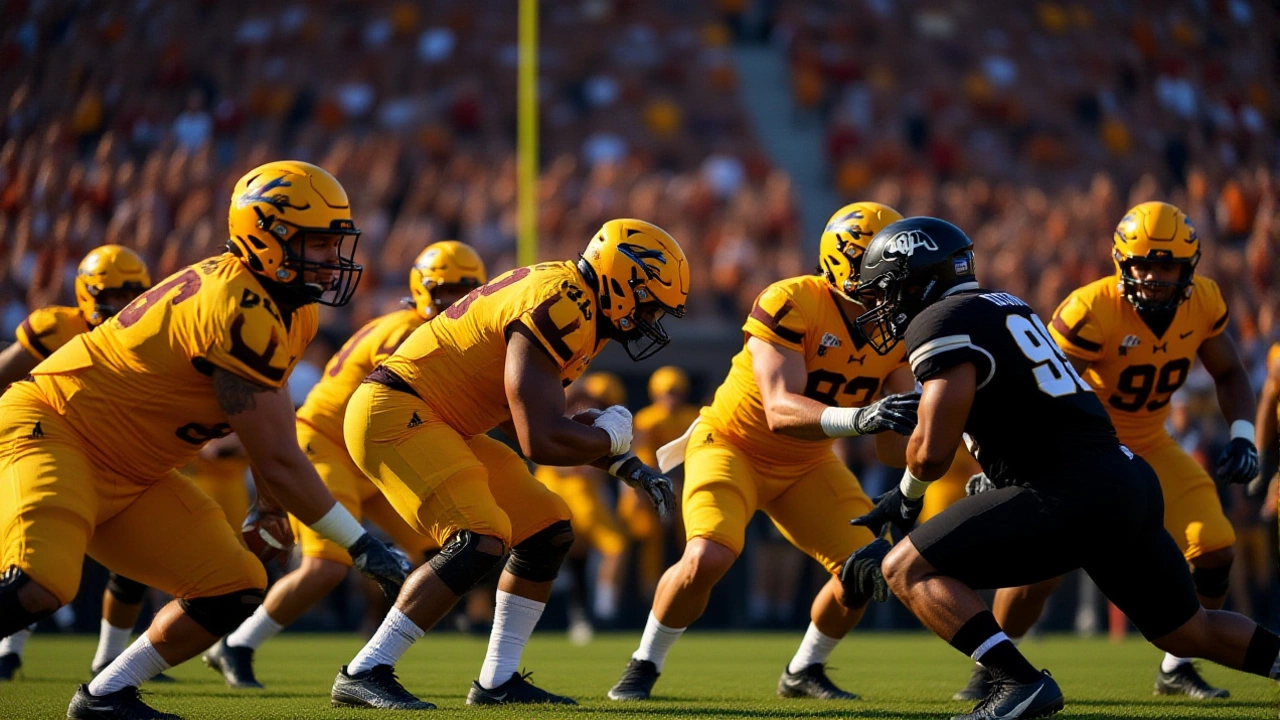When the final whistle blew at Folsom Field on Saturday, November 22, 2025, the Arizona State Sun Devils had turned Colorado’s Senior Day into a nightmare — 42-17, with Raleek Brown running for 255 yards, the third-highest single-game total in school history. The Colorado Buffaloes, playing their final home game of the season under head coach Deion Sanders, forced four turnovers but scored just three points off them. That’s not just poor execution — it’s a failure to seize momentum when it mattered most. And in a season defined by missed chances, this loss stung the most.
Turnovers Without Results
Colorado’s defense showed up. Safety John Slaughter III picked off a pass. Linebacker Shaun Myers came up with another. The Buffaloes had the ball in Arizona State’s red zone twice after takeaways. Yet they came away with a 28-yard field goal and nothing else. Meanwhile, Arizona State coughed up three fumbles and one interception — and still won by 25 points. How? Because when the Sun Devils had the ball, they didn’t just move the chains — they exploded.
At 13:30 remaining in the fourth quarter, Brown broke loose on an 88-yard touchdown run that turned a 35-17 lead into a rout. It was the kind of play that doesn’t just end a game — it ends a season’s hope. Brown finished with two touchdowns, averaging 9.5 yards per carry. His performance wasn’t just dominant; it was historic. Only two other Sun Devils in history have rushed for more in a single game.
Colorado’s Offensive Collapse
Quarterback Julian "JuJu" Lewis completed 19 of 38 passes for 161 yards and one touchdown — to wide receiver Omarion Miller — but was under constant pressure. The Buffaloes’ offensive line, already thin, was decimated. Starting tackles Jordan Seaton and Larry Johnson III were out. So were safeties Ben Finneseth and Carter Stoutmire, and cornerbacks RJ Johnson and DJ McKinney. Without them, Lewis had nowhere to hide. His longest completion? Just 24 yards. The running game? Only 87 total yards. Dallan Hayden’s 7-yard touchdown in the first quarter was Colorado’s only score from scrimmage until the final seconds.
Arizona State’s offense, meanwhile, racked up 580 total yards — 355 of them on the ground. Kicker Jesus Gomez opened the scoring with a 39-yard field goal after a 42-yard catch by wideout Jordyn Tyson. Then came the 68-yard touchdown pass from quarterback to Derek Eusebio in the third quarter — a play that shifted momentum entirely. And don’t forget punter Kanyon Floyd, who completed a 19-yard pass on fourth down to defensive tackle Blazen Lono-Wong. That’s not desperation — that’s creativity. And it worked.

The Second-Half Surge
Colorado led 7-3 after the first quarter. By halftime, it was 13-7 Arizona State. Then came the second half — and the unraveling. The Sun Devils outscored the Buffaloes 29-10 after the break. Three touchdowns. Two field goals. One 88-yard bomb. Colorado’s offense went silent. Their defense, despite the turnovers, couldn’t get off the field. At 8:48 in the fourth, Kanye Udoh punched in a 3-yard TD to make it 35-17. And just like that, the game was over.
It wasn’t just the score. It was the rhythm. The confidence. Arizona State never looked rattled. Colorado, despite the energy of Senior Day, looked exhausted — mentally and physically. Sanders, who brought national attention to the program, had no answer. His team had the tools. They just didn’t finish.
What This Means for Both Teams
For Arizona State (9-3, 7-2 Big 12), the win keeps them alive in the conference title race. They’ll host rival Arizona Wildcats on Friday, November 28, 2025 — a game that could decide who plays in the Big 12 Championship. The Sun Devils’ ability to overcome turnovers and rely on explosive plays makes them dangerous. Brown’s performance wasn’t a fluke — it was a statement.
For Colorado (5-7, 3-6 Big 12), the season ends with a whimper. Their final game is at Kansas State on Saturday, November 29, 2025. A losing record. No bowl eligibility. Questions about Sanders’ long-term plan. The Buffaloes had talent. They had momentum early in the season. But consistency? Execution? Those were missing. And on Senior Day, the void was glaring.

Why This Game Matters Beyond the Box Score
This wasn’t just a loss. It was a microcosm of Colorado’s season: moments of brilliance drowned by self-inflicted failure. Four turnovers. Three points. That’s not bad luck — that’s a coaching issue. The Buffaloes didn’t lack effort. They lacked discipline. And in college football, especially in the Big 12, that’s fatal.
Arizona State, meanwhile, proved they can win ugly. They don’t need perfect games. They just need Brown to break one run. They just need Floyd to convert a fourth down. They just need to stay calm when things go wrong. That’s championship DNA.
Frequently Asked Questions
How did Raleek Brown’s 255-yard game rank in Arizona State history?
Brown’s 255 rushing yards on November 22, 2025, were the third-highest single-game total in Arizona State Sun Devils history. Only two players — Eno Benjamin (297 yards in 2019) and Marion Grice (264 yards in 2012) — have rushed for more in a game. His 88-yard touchdown run was the longest of his career and the longest by an ASU back since 2020.
Why did Colorado’s defense force four turnovers but only score three points?
Colorado’s offense stalled repeatedly in the red zone after takeaways. After Shaun Myers’ interception, they reached Arizona State’s 9-yard line but settled for a 28-yard field goal. Another turnover led to a three-and-out. The Buffaloes’ offensive line, missing two starters, couldn’t create consistent pressure, and quarterback Julian Lewis struggled with timing under duress. It wasn’t a lack of opportunity — it was a lack of execution.
How did Arizona State overcome three fumbles and an interception?
Arizona State’s offense was simply too explosive to be held back. Raleek Brown’s 255 yards and two touchdowns, combined with Derek Eusebio’s 68-yard touchdown catch and Kanyon Floyd’s unexpected 19-yard pass on fourth down, kept drives alive and defenses off balance. Their special teams and defense also held firm, preventing Colorado from capitalizing on mistakes — a stark contrast to the Buffaloes’ inability to do the same.
What impact did Colorado’s injured starters have on the game?
Colorado was missing four key offensive and defensive starters: tackles Jordan Seaton and Larry Johnson III, safeties Ben Finneseth and Carter Stoutmire, and cornerbacks RJ Johnson and DJ McKinney. Without Seaton and Johnson, Julian Lewis was sacked five times and pressured on nearly half his dropbacks. The secondary’s absence allowed Arizona State’s receivers to operate freely, contributing to 355 rushing yards and 580 total yards of offense.
What’s at stake for Arizona State in their final game against Arizona?
Arizona State (9-3) can still win the Big 12 if they beat Arizona and hope for a Texas Tech loss. A win would clinch a top-four seed and likely a spot in the conference championship game. The rivalry game on November 28 is more than just pride — it’s their last chance at a New Year’s Six bowl. Raleek Brown’s performance against Colorado has set the stage for a potential career-defining finale.
Will Deion Sanders remain as Colorado’s head coach next season?
While no official statement has been made, the 5-7 record and failure to reach a bowl game for the second straight year raises serious questions. Sanders brought national attention to Colorado, but without consistent wins and offensive execution, pressure is mounting. Athletic director Rick George has publicly praised Sanders’ energy, but the administration has also signaled a need for tangible results — and this loss may be the tipping point.

Maxwell Radford
I'm Maxwell Radford, a passionate news analyst living in Australia. My area of expertise includes business, general news, and arts, and I take immense pleasure in delivering deep insights about these subjects to my readers. I have worked with different media outlets enhancing my knowledge and honing my writing skills. Capturing the nuances of finance and the creative world in my writings is what I strive for.